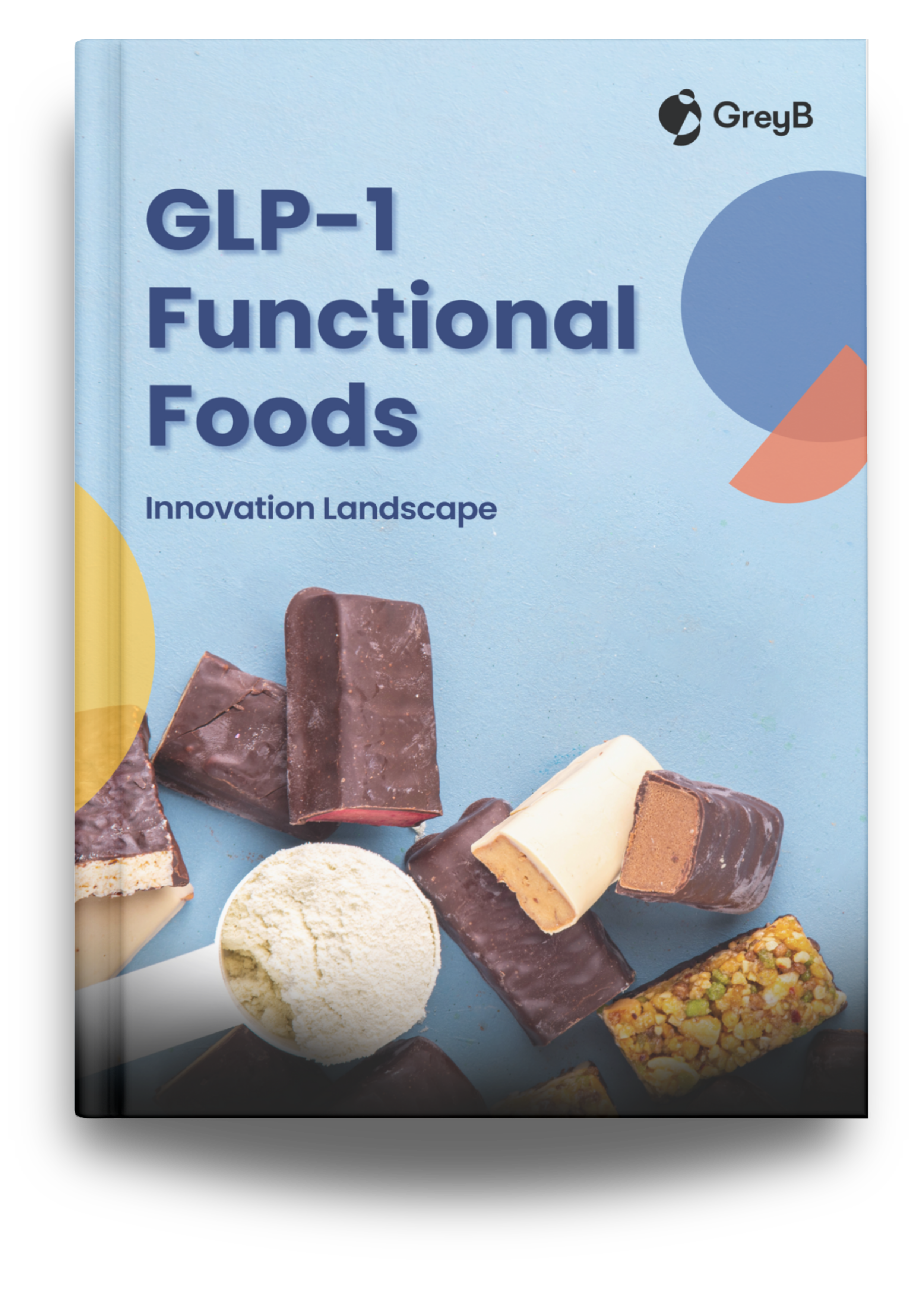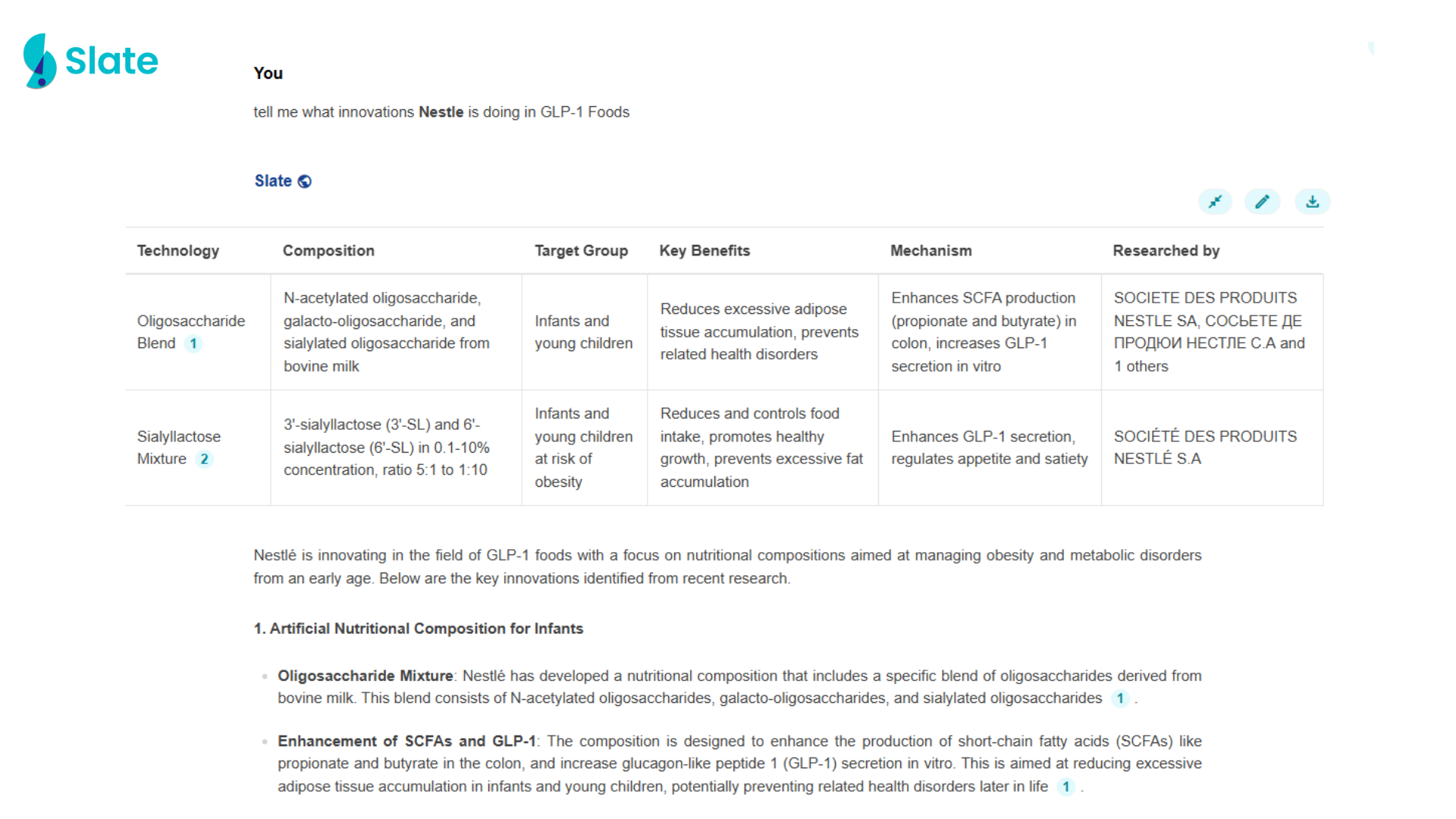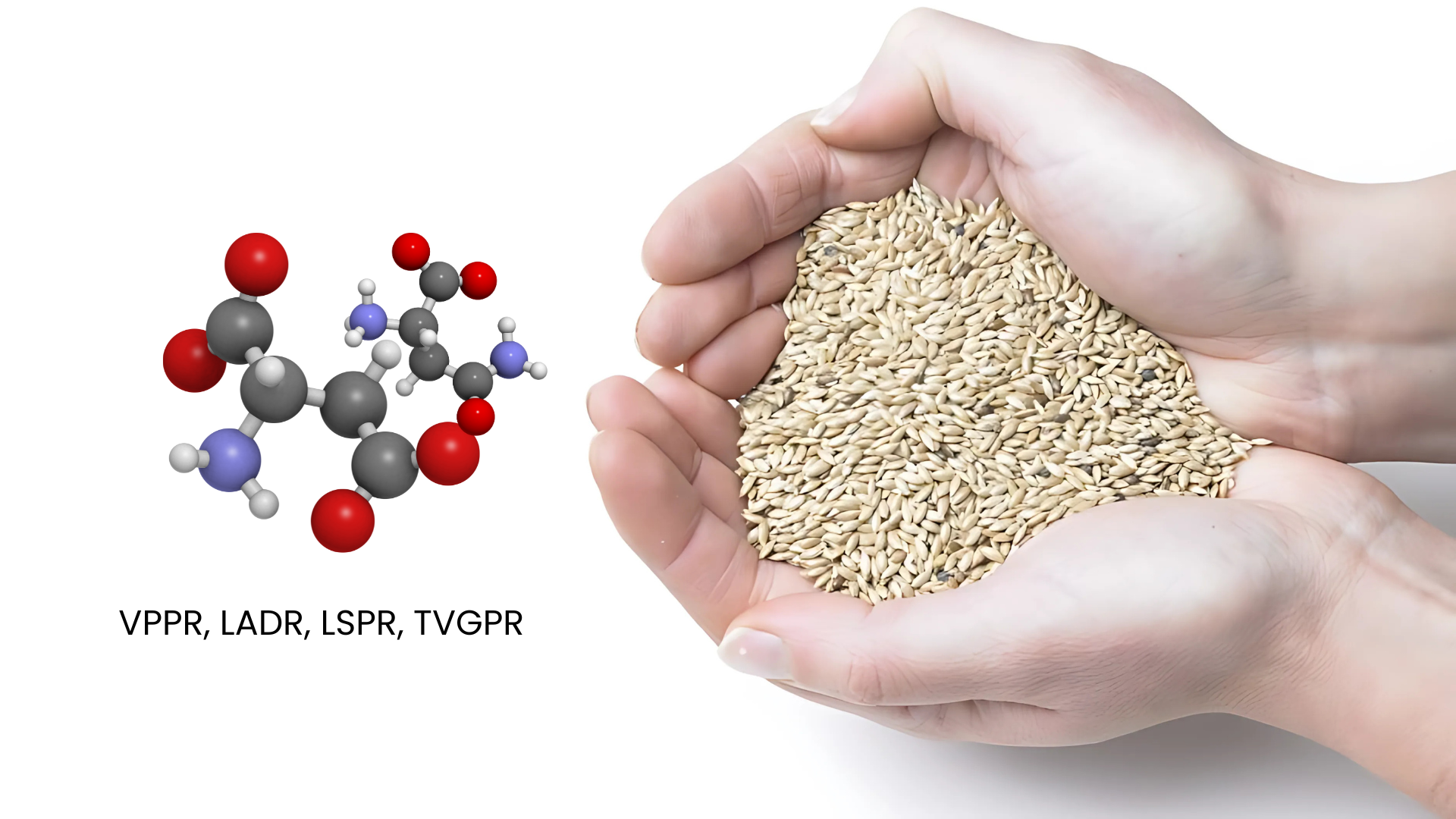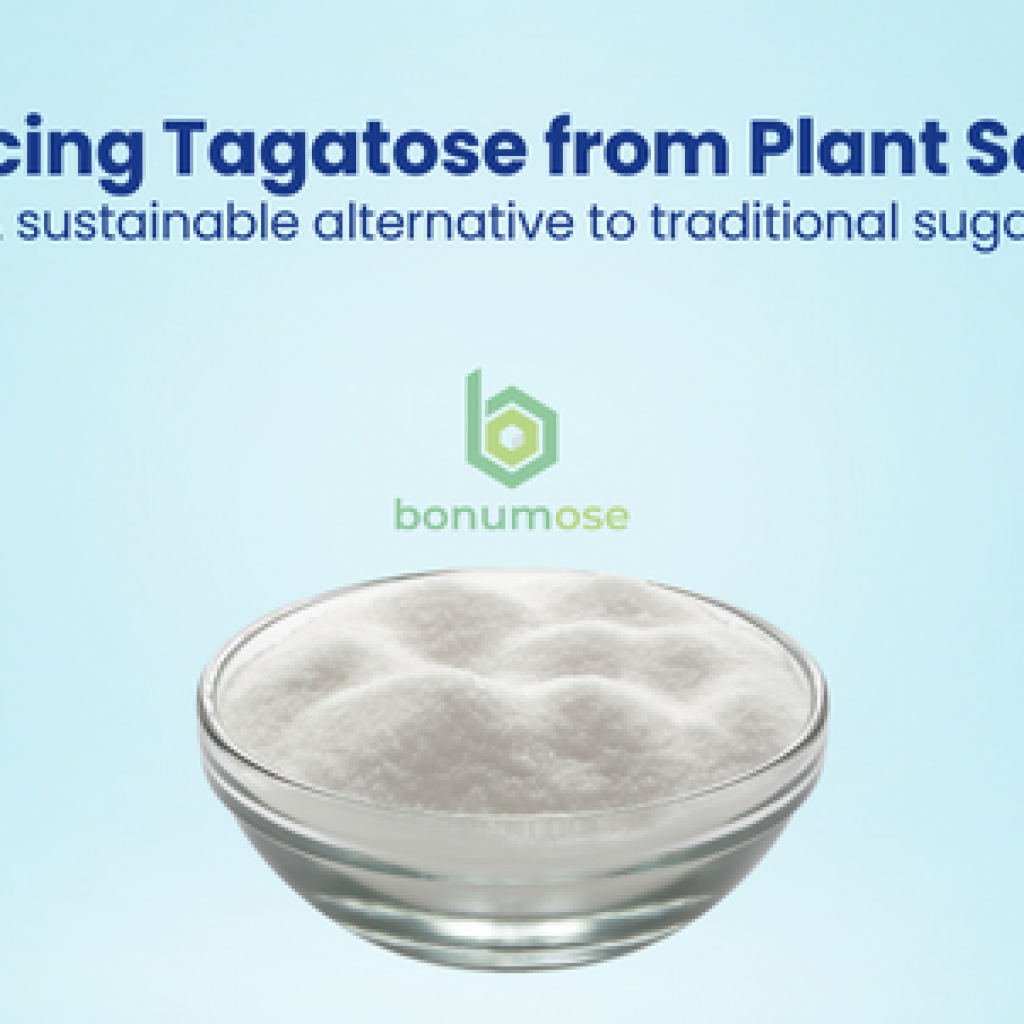According to a study by Cornell University, the share of the U.S. population taking GLP-1 drugs increased from 5.5% in October 2023 to 8.3% in July 2024. In prior years, new users taking GLP-1 medications for weight management and diabetes increased from 21,000 in 2019 to 174,000 in 2023, marking a 700% rise. The trend is clear – the number of GLP1 users is rising.
“Through our nutrition expertise and consumer-centric approach, we identified a need for a new line of products that delivers great taste and functional benefits for GLP-1 users or those otherwise managing their weight.”
Kristen Stoehr, Registered Dietitian and Vital Pursuit Brand Manager
As more individuals turn to these treatments, there is an increasing demand for GLP-1-friendly foods and nutrition products that align with the dietary needs of GLP-1 users. These people require specialized foods that patch nutrient deficiencies to complement their medication regimen. However, according to the regimen, their meals cannot contain certain compounds, such as processed sugars and refined carbohydrates. This constraint presents both a challenge and an opportunity for the food industry.
From Nestlé’s launch of the Vital Pursuit range to Abbott’s high-protein shakes, several leading companies are introducing nutrition solutions that support these people’s needs. This report explores these GLP-1 inventions and the potential opportunities they create for new commerce.
To get more insights into the GLP-1 foods landscape, please download a sample report from the form below. It contains insights into patent trends, company strategies, enzymatic breakthroughs, and what’s next in the sugar reduction pipeline.

Nestlé made a specialised platform tailored for GLP-1 customers.
Nestlé Health Science has launched a dedicated platform to cater to the dietary needs of GLP-1 consumers. This platform is designed to provide nutritional support from healthcare experts, focusing on enhancing the overall nutritional experience of GLP-1 users.
The company has introduced Vital Pursuit, a new line of GLP-1-friendly foods. The products contain high protein, fiber, and essential nutrients and are portion-aligned. Nestle’s CEO comments, “We’re leveraging our deep understanding of consumers and nutritional science to stay ahead of the trends.”

These offerings demonstrate Nestlé’s commitment to providing nutritious, tailored food options that complement the dietary needs of individuals taking these medications. This early move has helped position Nestlé Health Science as a proactive leader in the field, anticipating market needs for GLP-1 patients.
The company has also developed some nutritional compositions for appetite control in infants, particularly those at risk of obesity. Their mixture specifically consists of 3′-sialyllactose (3′-SL) and 6′-sialyllactose (6′-SL), which enhances GLP-1 secretion to promote satiety and reduce appetite. These oligosaccharides are produced using enzymes and microbial fermentation, ensuring a natural approach for infants.
Information like this isn’t easily found through typical search engines like Google. You’ll be overwhelmed with hundreds of unrelated results from questionable sources. This is where a research-focused tool like Slate helps out.
Slate just requires you to enter your query, for example, simply enter “Tell me what innovations Nestle is doing in GLP-1 Foods”. Within seconds, it compiles a list of highly relevant results from research papers and patents in an easy-to-digest manner.

It also lets you “chat” with these research papers to find out more details! There’s no need to sift through a tidal wave of irrelevant Google search results. Try this out yourself using the simple form below.
Diet4Life APS has developed a unique formula to promote a sense of fullness
Diet4Life APS, a research-based company, has developed a formula designed to support weight management. Their patent outlines polypeptides that help people feel full and manage their weight, potentially reducing the risk of obesity and related health issues. These peptides boost the release of GLP-1 from intestinal cells, increasing feelings of fullness.
They can be given directly to patients if needed. The invention focuses on utilizing these peptides in nutritional supplements to regulate calorie intake without significantly increasing energy, offering a promising option in GLP-1 foods.
Purdue Research Foundation uses canary seed extracts to suppress hunger sensation

The Purdue Research Foundation has developed a method to help reduce hunger in obese or at-risk individuals. This method uses bioactive peptides from canary seed (Phalaris canariensis L.). These are administered at a dosage of 20 to 40 mg for each kilogram of body weight per day.
These peptides are extracted by mixing defatted canary seed flour with water. This is followed by centrifugation, pH level adjustment, enzymatic breakdown using Alcalase®, and pressurized filtration. The peptides obtained from this method contain about 70% crude protein, 1.3% crude fat, and 17% carbohydrates, which contribute to their effective properties.
In addition to suppressing hunger, this innovation enhances glucose tolerance and prevents weight gain, making it a promising option for managing obesity.
ADM has created 25 ready-to-launch foods for GLP-1 users
ADM is another key player dedicatedly to investing in GLP-1-supportive solutions. This company has introduced a platform with over 25 market-ready food and supplement concepts. These recipes will help food manufacturers meet the nutritional needs of individuals using GLP-1.
ADM’s proprietary research backed these offerings, stating that 83% of GLP-1 users prefer food products marketed as ‘supportive’ of their medication needs. It reflects ADM’s commitment to integrating research and consumer needs into product development.

ADM’s strategy is to leverage its extensive expertise in nutrition and food production to offer innovative solutions that complement the effects of GLP-1 drugs, thereby supporting consumers’ health and dietary objectives. This initiative is a business opportunity and a strategic move to expand ADM’s influence and presence in the rapidly evolving intersection of food and health sciences.
Conagra Brands has added badges to its foods to capitalize on the growing demand for the GLP-1 market.

Conagra Brands has introduced a labeling system for Healthy Choice frozen meals that caters to individuals using GLP-1 drugs. This “on track” badge signifies that the product they created has high protein and fiber with low calories. It also makes it more appealing to consumers choosing GLP-1-friendly foods that work with their regimens. They launched this labeling on select Healthy Choice products in January 2025.
This is one of the industry’s first approaches to capitalizing on the growing consumer interest in GLP-1 weight loss drugs. This is part of a broader strategy to align their food offerings with the dietary needs of individuals under GLP-1 treatment regimens.
By adapting its product offerings and marketing for GLP-1 users, Conagra positions itself to capture a significant share of this emerging market.
Specialized protein shakes for GLP-1 consumers by Abbott Laboratories

Abbott Laboratories, known for its nutritional products such as Ensure and Glucerna, has expanded its offerings to include high-protein shakes designed for GLP-1 users. This strategic product development aims to meet individuals’ protein and nutritional requirements using GLP-1 medications.
The shakes are marketed with packaging that highlights their suitability for individuals undergoing GLP-1 treatments, addressing the dietary adjustments often required with such medications. They contain fast- and slow-digesting proteins that support muscle health for up to seven hours, helping prevent muscle loss during weight loss. They also allow users to feel full longer, addressing appetite suppression caused by GLP-1 medications.
This product is generally well-received. Abbott has a Net Promoter Score (NPS) of 36, with 59% of customers recommending its products, ranking it first among competitors. However, as per online shopping reviews, there’s mixed feedback on taste and texture.
This strategy shows how traditional nutrition companies can diversify their product lines to include specialized dietary solutions catering to specific consumer segments. Through this approach, Abbott strengthens its brand in the nutritional supplement market and aligns itself with broader health and wellness trends influencing consumer choices. This strategy shows an early-adopter understanding of the evolving needs of health-focused consumers and the potential for growth within specialized nutrition markets.
WeightWatchers is developing tailored diet plans for individuals on GLP-1 regimens.

WeightWatchers is a longstanding leader in the weight management industry. The company has recognized the growing demand for GLP-1 medications as an opportunity to expand its service offerings. The company has launched a GLP-1 Weight-Loss Program.
This program emphasizes protein intake, hydration, and the consumption of fiber-rich foods to support muscle health and optimal digestion. It provides a curated list of nutrient-dense foods that help users maximize their calorie intake while avoiding common side effects. It also includes daily expert-led activity targets and strength-training recommendations for muscle preservation. WeightWatchers has also integrated GLP-1-friendly foods nutrition guidance into its existing Points program.
This initiative showcases the company’s agility and commitment to maintaining leadership in the evolving landscape of weight management. Weight Watchers’ integration of GLP-1-specific offerings can attract a broader audience seeking practical weight management tools, reinforcing its market position.
Conclusion
The growing popularity of GLP-1 medications has created a unique and pressing demand for regimen-friendly foods that support users’ needs. As we’ve seen from industry leaders such as Nestlé, ADM, Conagra Brands, etc., there is a clear opportunity to develop products that bridge pharmaceutical and food solutions. Their consumer-centric, research-driven approach helps build trust and long-term brand loyalty in a market that’s still defining itself.
Looking ahead, the market for GLP-1 supportive nutrition is expected to continue its rapid growth. Market research suggests that 1 in 4 consumers globally have altered their diet to lose weight in the past year. This trend aligns with the rise of GLP-1 drugs. This indicates a significant opportunity for R&D leaders to capitalize on the convergence of pharmaceutical and food technologies.
The convergence of pharma and food tech also means regulatory landscapes will evolve quickly. Anticipate tighter scrutiny and build compliance checkpoints into product development early. R&D that incorporates clinical insights and consumer feedback loops will be better positioned to scale products rapidly as market demand grows.
The key is understanding the nuanced dietary restrictions—low processed sugar, controlled carbs, high protein, fiber, and a balance of micronutrients—and turning these constraints into opportunities for innovation.
The fastest way to capture market share is by aligning R&D with evolving consumer demands for taste, function, and convenience. Expand your innovation pipeline by exploring novel bioactive peptides or fermentation techniques that boost GLP-1 secretion or satiety. Fill the form below to contact our experts and find the best formulations that can be easily integrated into your product lines.













